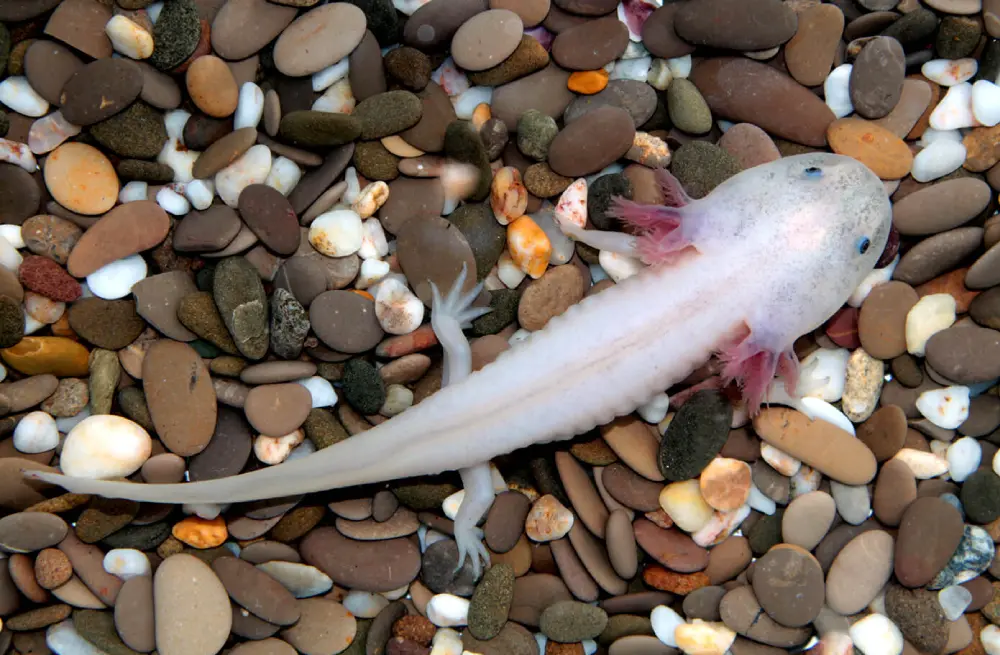Okapi is a unique animal that belongs to the giraffid family and is native to the Ituri rainforest in Central Africa. The pygmies, who live in the Ituri forest, were the first to make contact with okapis and introduced them to the world. Okapi’s existence was unknown to the Western world until 1901 when Sir Harry Johnston discovered the species and named it Okapia johnstoni.
Okapis are herbivores and feed on a variety of plants, including grasses, fruits, fungi, and bushes. In captivity, okapis have been known to give birth to one calf at a time and exhibit maternal care towards their young ones. Despite being protected by law, okapis are still hunted for bushmeat, which poses a threat to their population.
What’s an okapi? An okapi is an elusive animal that has captured our imaginations since its discovery over a century ago. With its striking stripes and long neck resembling that of a giraffe’s, this creature is truly fascinating.
The scientific name for okapi is Okapia johnstoni. This name was given in honor of Sir Harry Johnston who discovered the species during his exploration of Central Africa.
Okapis are not only visually captivating but also play an important role in their ecosystem as seed dispersers. They have a unique digestive system that allows them to break down tough plant fibers efficiently.
However, despite their importance in maintaining biodiversity in their habitat, they face threats from human activities such as deforestation and hunting for bushmeat. Conservation efforts are underway to protect these animals from extinction.
Overview
| Characteristic | Okapi |
|---|---|
| Scientific Name | Okapia johnstoni |
| Family | Giraffidae |
| Type | Mammal |
| Order | Artiodactyla |
| Temperament | Docile |
| Lifespan | 20-30 years |
| Size | 4.9 to 6.2 feet (1.5 to 1.9 meters) |
| Weight | 440 to 770 pounds (200 to 350 kilograms) |
| Diet | Herbivore |
| Distribution | Democratic Republic of the Congo |
| Habitat | Rainforests |
| Other names | Forest giraffe, zebra giraffe, Congolese giraffe |
Physical Characteristics of Okapi
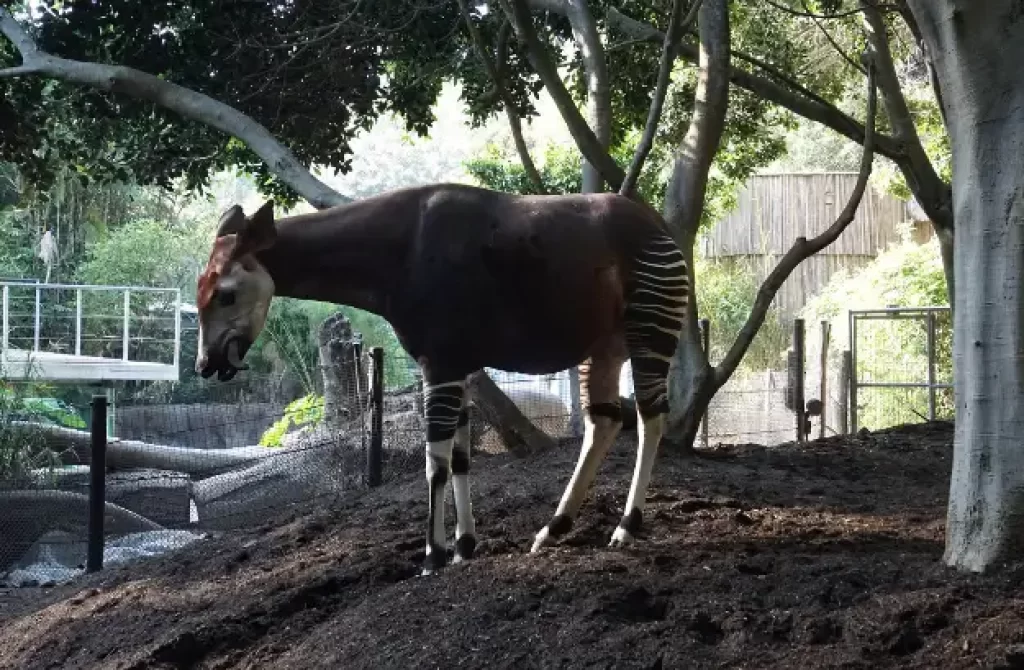
Okapi, also known as the forest giraffe or zebra giraffe, is a unique animal that inhabits the dense rainforests of central Africa. With its dark brown coat, white stripes on its legs, and long neck, the okapi has a distinctive physical appearance that sets it apart from other animals. In this section, we will explore some of the unique features and adaptations of this fascinating creature.
Long Tongue for Grasping Leaves
One of the most distinctive features of an okapi is its tongue. The tongue can extend up to 18 inches and is prehensile, meaning it can grasp leaves and buds from trees with ease. This adaptation allows them to reach food sources that are out of reach for other animals in their habitat.
Sensitive Ears for Detecting Sounds
Okapis have highly sensitive ears that can rotate independently to detect sounds from different directions. This adaptation helps them locate predators or prey in their dense forest environment. Their hearing ability is so sharp that they can hear infrasonic sounds that are below human hearing range.
Ossicones for Defense
Another unique feature of an okapi is its ossicones (horns). Unlike giraffes’ horns which are bony, okapis’ ossicones are covered with skin and hair. They use these horns mainly for defense against predators such as leopards or hyenas. Male okapis have longer horns than females.
Flexible Hooves for Silent Walking
Okapis’ hooves are flexible and can spread apart when needed, allowing them to walk silently through the forest floor without disturbing their surroundings. This adaptation makes them stealthy hunters but also helps them avoid predators by moving quietly through their habitat.
Stocky Build for Navigating Thick Vegetation
The body shape of an okapi is adapted for living in dense forests with a stocky build and short legs that help them navigate through thick vegetation. They have a unique gait where they move both legs on one side before moving to the other side, which allows them to maintain balance in their uneven terrain.
Behavior of Okapi: Habitat, Diet, and Social Life
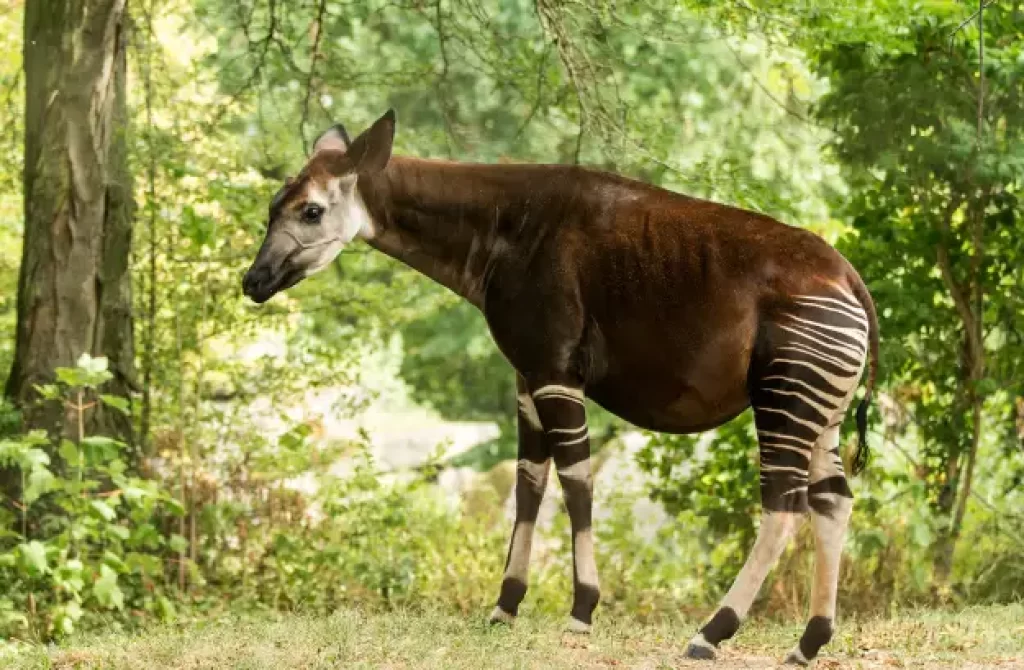
Okapi are known to be herbivores that mainly feed on leaves, fruits, and shoots found in their natural rainforest habitat. They have a long tongue that can reach up to 18 inches, which they use to grasp branches and pull them towards their mouths.
Their diet is highly dependent on the seasonality of vegetation growth in the forest. During the wet season when new vegetation growth is abundant, okapi tend to feed on young leaves and shoot tips. In contrast, during the dry season when food sources are scarce, they shift their diet towards mature leaves and fruits.
Solitary Living: Home Ranges Spanning Up To 5 Square Kilometers
Okapi are solitary animals by nature and prefer to live alone rather than in groups. They establish home ranges that can span up to 5 square kilometers but may overlap with other okapi’s territories.
Due to their solitary nature, interactions between individuals are rare except during mating season or when a mother is caring for her calf. Okapi are highly adapted to their rainforest habitat; their striped coat provides camouflage against predators while their keen sense of smell helps them navigate through dense vegetation.
Social Life: Vocalizations and Scent Marking
Although okapi primarily live alone, they do interact with each other through vocalizations and scent marking. Males use loud vocalizations called “moans” during the breeding season as a way of attracting females or warning off other males from entering their territory.
Both males and females also mark trees with secretions from glands located on their feet as a way of communicating with other okapis about territorial boundaries or reproductive status.
Survival Tactics: Adaptation And Conservation Efforts
Due to habitat loss caused by deforestation as well as hunting for bushmeat and traditional medicine purposes, okapi populations have declined significantly over recent years. Conservation efforts such as habitat restoration, anti-poaching patrols, and community education programs are crucial for the survival of this unique species.
Okapi’s ability to adapt to their rainforest habitat has allowed them to survive in a constantly changing environment. However, it is important that humans take responsibility for preserving this species by protecting their natural habitats and reducing hunting pressure.
Interesting Facts about Okapi: Striped Coat, Long Tongue, and More
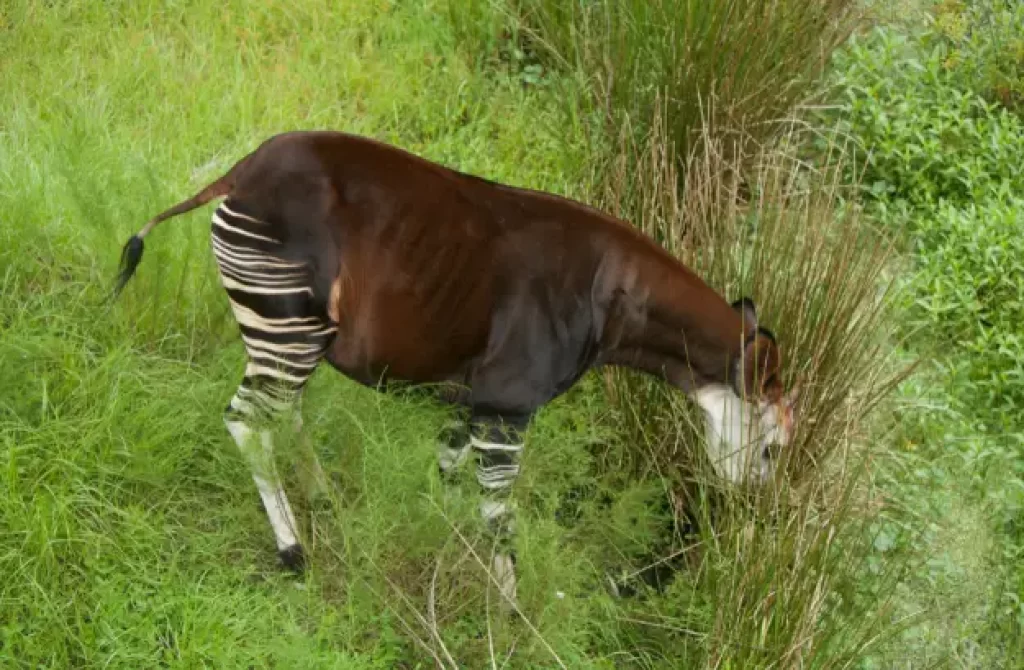
Prehensile Tongue: Okapis’ Secret Weapon
Okapis, the elusive forest giraffes of Central Africa, are known for their unique physical characteristics. One of their most fascinating features is their prehensile tongue that can reach up to 18 inches in length.
This long and dexterous organ allows them to grasp leaves and bring them into their mouths with ease. Okapis’ tongues are similar to those of giraffes, which are their closest living relatives.
These gentle creatures primarily rely on their tongues to strip leaves from branches rather than using teeth.
They use their tongues for grooming as well as feeding, often licking their own eyes and ears clean. Their long tongues also help them reach deep into crevices where other herbivores cannot access food.
Striped Coat: A Unique Pattern
Okapis have reddish-brown fur with horizontal white stripes on their legs and hindquarters, and hair whorls on their necks. The stripes on an okapi’s coat are unique to each individual, like human fingerprints. These stripes help camouflage them in the dense forests where they live by breaking up the outline of their bodies.
The reason behind this unique coat pattern is still a mystery to scientists. Some speculate that it may be a form of disruptive coloration that helps conceal them from predators or rivals. Others suggest that it may play a role in social communication among okapis.
Horns: A Formidable Defense Mechanism
Male okapis have short horns covered in hair-like projections called ossicones that grow up to 6 inches in length. Females lack these ossicones but have small bumps on their heads instead. These bony structures serve as formidable defense mechanisms against predators such as leopards or hyenas.
Okapi calves are born without horns but develop them within a few months after birth. The ossicones continue growing throughout the animal’s life, and the shape and size of the ossicones can be used to determine an okapi’s age.
What Eats Okapis?
Despite their large size, okapis are preyed upon by a variety of predators in their natural habitat. Leopards, hyenas, and African golden cats are known to hunt okapis. However, these elusive animals have several defense mechanisms that help them avoid being caught.
Their excellent hearing and sense of smell allow them to detect danger from afar, while their camouflage helps them blend into the forest environment.
In addition to predation, habitat loss due to deforestation and human encroachment is also a significant threat to okapi populations. Conservation efforts are underway to protect these unique creatures and ensure their survival for future generations.
Conservation Status of Okapi: Threats and Challenges in the Wild
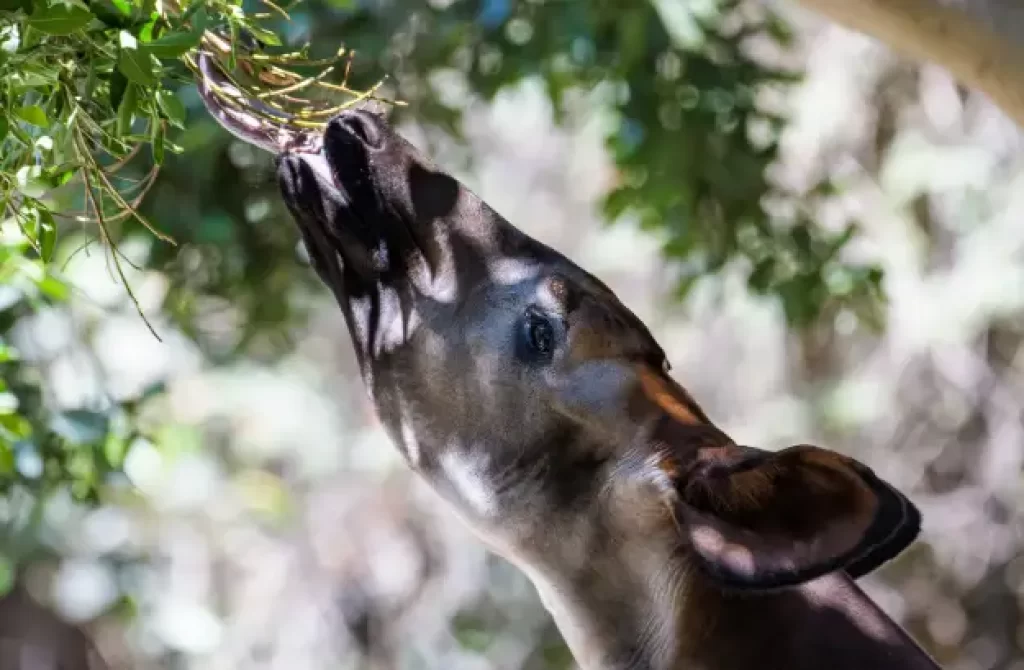
Endangered Species: Okapi
Habitat loss and poaching have led to the decline of okapi’s population, an endangered species in the wild. The population has decreased by 50% in the last two decades, making it a matter of concern for conservationists.
Habitat Loss
The habitat of okapi is being destroyed due to logging, mining, and human settlement. The forests where they live are being cleared for agriculture and human settlements. As a result, their natural habitat is shrinking rapidly. This leaves them with less space to roam freely and find food.
Poaching
Poaching for bushmeat and illegal trade of okapi skin and horns are major threats to their survival. In some areas, hunting okapi has become a lucrative business for many people who sell their meat as bushmeat or use their skin and horns for traditional medicine or decoration purposes.
Conservation Efforts
To conserve the declining population of okapi, protected areas have been established where hunting is prohibited. Anti-poaching patrols have also been set up to protect these animals from hunters who may try to kill them illegally. Conservationists are working closely with local communities to raise awareness about the importance of protecting these animals.
Sustainable Forest Management
Sustainable forest management is crucial for the long-term conservation of okapi. It involves managing forests in such a way that they can continue providing resources without compromising the ability of future generations to meet their needs. Sustainable forest management also helps reduce deforestation rates caused by illegal logging activities.
Alternative Livelihoods
Providing alternative livelihoods for local communities is another important step towards conserving okapi populations in the wild. When people have access to other sources of income besides hunting or clearing forests, they will be less likely to engage in activities that harm wildlife habitats.
Efforts to Protect Okapi: Conservation Programs and Partnerships
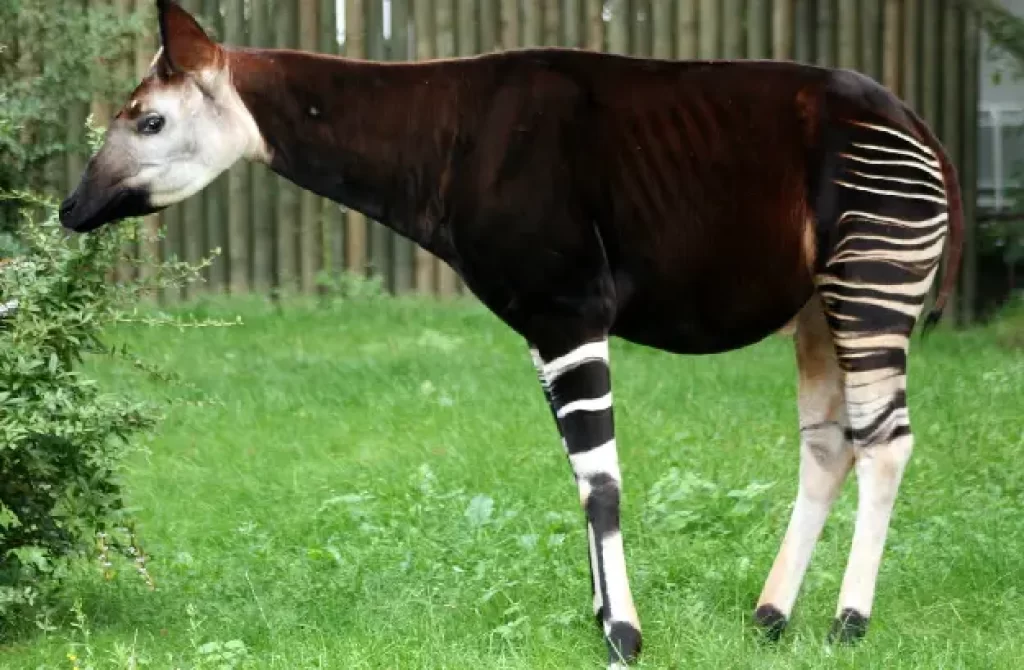
The Okapi Conservation Project (OCP) is a major initiative aimed at protecting the okapi population and their habitats from the threats of habitat loss and development. Efforts to protect okapis have been focused on establishing protected areas, such as the Okapi Wildlife Reserve in the Democratic Republic of Congo.
The reserve covers an area of 13,700 square kilometers and was established in 1992 to safeguard okapi populations and their dense forest habitats.
In addition to creating protected areas, OCP has also partnered with local communities to promote sustainable land use practices and reduce human-wildlife conflict in areas where okapi populations are found.
One example is the Ituri Forest Community Conservation Project, which provides training and support for local communities to develop sustainable agriculture practices that do not harm or disturb okapis or other wildlife species.
Habitat loss due to deforestation and development remains a significant threat to okapi populations, as their survival is closely tied to the availability of dense vegetation in forested areas.
According to a study by WWF, between 2004-2014, approximately 17% of the forest cover within the range of okapis was lost due to human activities such as logging, mining, and agriculture.
This highlights the need for continued conservation efforts and protection measures for these unique animals.
Another threat facing okapis is poaching for their distinctive ossicones on the heads of male individuals. These ivory-like structures have made them a target for poachers who sell them on illegal wildlife markets.
To combat this issue, OCP has implemented anti-poaching patrols within protected areas and works with law enforcement agencies to crack down on illegal wildlife trade.
While okapi populations are primarily found in central Africa, efforts to protect them have expanded southward into countries like Uganda and Rwanda where they are also threatened by habitat loss and poaching.
In Uganda’s Semuliki National Park, conservationists have worked with local communities to establish a corridor that allows okapis to move freely between protected areas, reducing fragmentation of their habitats and increasing genetic diversity within populations.
Okapi in Zoos: Role in Education and Species Survival
Zoos play an important role in educating the public about okapi conservation and their significance in the wild. As one of the most endangered species on the planet, okapis are facing a significant threat to their survival due to habitat loss, poaching, and civil unrest in the Democratic Republic of Congo.
In this section, we will discuss how zoos can help save okapi populations by raising awareness about their plight and supporting breeding programs.
Conservation Education
One of the primary roles of zoos is to educate visitors about wildlife conservation. Zoos provide a unique opportunity for people to learn about animals that they may never have seen before.
By showcasing okapis, zoos can raise awareness about their importance in the wild and educate visitors about the threats they face. Many zoos offer educational programs that focus on conservation efforts and highlight ways individuals can help protect endangered species like okapis.
Okapi Wildlife Reserve
The Okapi Wildlife Reserve was established in 1992 to protect okapis and their habitat from illegal activities such as hunting, mining, and logging.
Despite these efforts, many challenges remain for protecting this species. Civil unrest in Congo has made it difficult for park rangers to patrol protected areas effectively. Illegal hunting is also a significant problem as poachers target okapis for bushmeat or use their skin for traditional clothing.
Breeding Programs
To maintain genetic diversity within captive populations of okapis, many zoos participate in breeding programs.
These programs aim to increase the number of captive-bred animals while also preserving genetic diversity within those populations. By participating in these programs, zoos help ensure that future generations will have access to healthy populations of okapis.
Supporting Conservation Efforts
By supporting zoos and conservation organizations working to save endangered species like okapis, individuals can make a real difference in protecting these animals’ future survival.
Donations go towards funding research projects aimed at better understanding these animals’ biology and behavior, protecting their habitat from human activities, and supporting breeding programs that help maintain genetic diversity in captive populations.
Economic Importance of Okapi for Humans: Positive and Negative Aspects

Okapi, an elusive and fascinating animal found in the dense forests of central Africa, has both positive and negative economic impacts on humans. In this section, we will explore the various ways that okapi contribute to human welfare as well as their potential drawbacks.
Generating Income through Leather Production
One of the most significant ways that okapi benefit humans is through their skin, which is used for making leather products.
The production of leather generates income for local communities and provides a livelihood for many people. Okapi leather is known for its durability and unique texture, making it a highly sought-after material in the fashion industry.
Attracting Tourism Industry
The presence of okapi in the wild also benefits the tourism industry by attracting visitors to the region. People from all over the world come to see these rare animals in their natural habitat, contributing to local economies by spending money on lodging, food, and other services.
Source of Protein
For some indigenous people living near okapi habitats, hunting these animals provides a source of protein. Okapi meat is considered a delicacy by some tribes and is an important part of their cultural heritage.
Negative Impacts on Ecosystem
However, human activities such as deforestation and agricultural expansion have led to habitat loss for okapi populations.
This destruction has negative impacts not only on okapis but also on other species that share their habitat. As one example, when trees are removed from forests where okapis live, soil erosion can occur which harms plant life and disrupts ecosystems further down the line.
Threats from Hunting & Poaching
Another major threat facing okapis is illegal hunting and poaching for their meat and skin. This practice poses a significant risk to their survival since they reproduce slowly and have low population densities.
Conservation Efforts Protect Other Species Too
Despite these challenges, conservation efforts aimed at protecting okapis have had positive effects not only on this species but also on others that share their habitat. By preserving the forests where okapis live, other animals and plants can thrive as well.
Communication and Perception in Okapi: Large Ears and Sensitive Nose

Rotating Ears for Optimal Sound Detection
Okapi, also known as forest giraffes, have large ears that can rotate independently to detect sounds from different directions. These ears are not only an important tool for detecting predators but also for communicating with other okapis.
They can move their ears up to 180 degrees, allowing them to pinpoint the source of a sound accurately. This ability is crucial in their dense forest habitat where visibility is limited.
Sensitive Smell and Taste Senses
Their prehensile tongue and sensitive nose allow okapis to smell and taste their surroundings, helping them locate food and potential mates.
Their sense of smell is so acute that they can detect fruits that are still unripe while browsing through the forest. The okapi’s tongue is long enough to reach its own eyes, which allows it to clean them regularly.
Neck Communication
Males use their necks to communicate dominance and establish hierarchy within their social groups. They do this by rubbing their necks against each other while making infrasonic calls below the range of human hearing. The dominant male will typically have a longer neck than others in the group, indicating his status.
Unique Vocalization System
Okapi has a unique vocalization system that includes infrasonic calls that are below the range of human hearing. These sounds play an essential role in communication between members of the same species over long distances since they can travel further than higher-pitched sounds. Researchers believe these vocalizations may help maintain social bonds between family members or signal danger.
Celebrating the Beauty and Value of Okapi in Our World
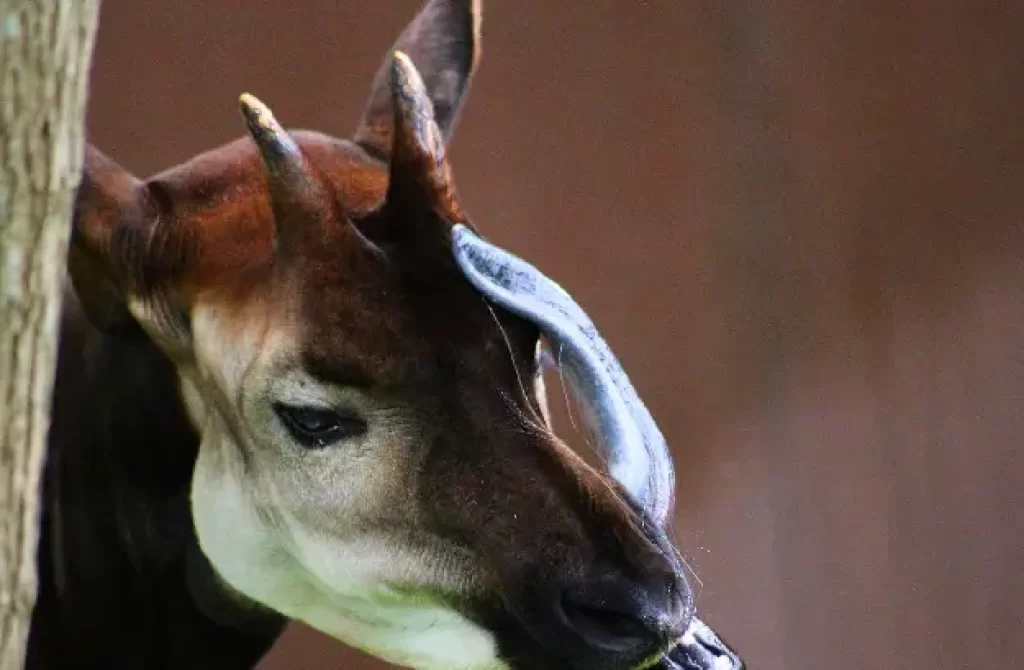
From their unique striped coat to their long tongue, okapi are truly fascinating creatures. As we have explored in this blog post, they possess many physical adaptations that allow them to thrive in their natural habitat. Their behavior is equally interesting, as they navigate complex social structures and rely on a diverse diet.
However, despite their beauty and value, okapi face many threats and challenges in the wild. Habitat loss and poaching continue to threaten their survival. Fortunately, there are dedicated conservation programs and partnerships working tirelessly to protect these remarkable animals.
In addition to their importance in the ecosystem, okapi also play a vital role in education and species survival through zoos around the world. They offer an opportunity for people to learn about these unique creatures up close while supporting conservation efforts.
While okapi may not hold significant economic importance for humans, it is important that we recognize and celebrate their intrinsic value as a species. Their large ears and sensitive nose demonstrate impressive communication skills that are still being studied by researchers today.
As we conclude our exploration of okapi, let us remember the importance of protecting these incredible animals for future generations. By supporting conservation efforts and spreading awareness about the challenges they face, we can help ensure that okapi continue to thrive in our world.
In short, let us celebrate the beauty and value of okapi – not just for what they offer us as humans but for what they bring to our planet as a whole.


